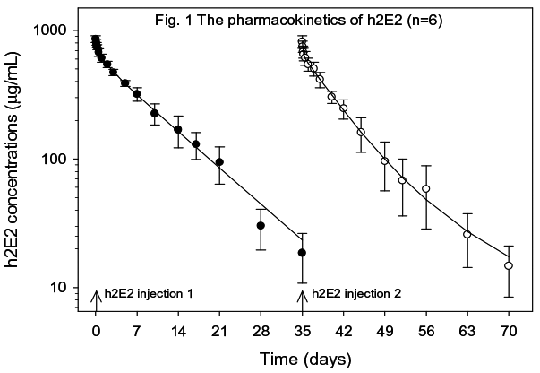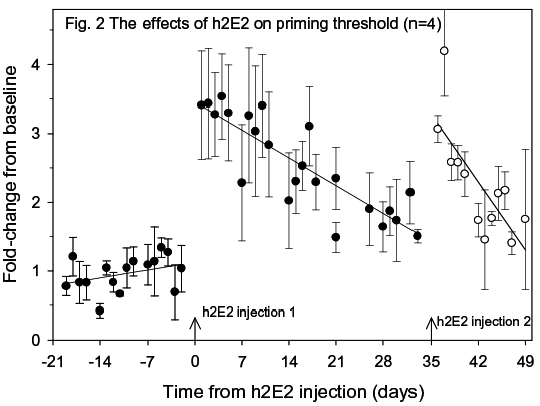The Pharmacokinetics and Effects of Repeated Treatments with a Humanized Recombinant Anti-Cocaine Monoclonal Antibody on Cocaine Self-Administration in Rats The humanized recombinant anti-cocaine monoclonal antibody (mAb) with the preclinical designation h2E2 is at an advanced stage of preclinical development as an immunotherapy for cocaine abuse. It can now be produced in gram quantities using a stably transfected mammalian cell line (Chinese hamster ovary cells). It has been shown to decrease cocaine concentrations in the brain in rats, demonstrating its potential efficacy as an immunotherapy for cocaine addiction [1]. It is hypothesized that h2E2 treatment should antagonize cocaine induced reinstatement of cocaine self-administration behaviour. Furthermore, clinical use will likely require multiple treatments of h2E2, and foreign proteins can induce neutralising immune responses, causing clearance to be accelerated after repeated treatments [2]. Therefore, the effects of repeated dosing with h2E2 on h2E2 pharmacokinetics and cocaine self-administration behaviour were investigated. Rats trained to self-administer cocaine were infused with h2E2 (120 mg/kg i.v), and 35 days after this initial injection, a second infusion of the same dose of h2E2 was administered. After both infusions, blood samples were taken and h2E2 concentrations were measured using enzyme-linked immunosorbent assay. After the first injection a two-compartment model generated estimates for a distribution half-life of 6.5 hours, an elimination half-life of 7.0 days, and a volume of distribution of 0.14 L/kg. The values were similar after the second injection (Fig. 1). The concentration required to reinstate cocaine self-administration (priming-threshold_. Baseline priming threshold was established over a three week period. After both injections of h2E2, priming thresholds were increased and then gradually declined over time (Fig. 2). Closed and open circles represent the first and second infusions respectively.
In conclusion, the h2E2 has a long terminal elimination half-life, even after a repeat injection. Since this is a largely human sequence protein, a neutralising immune response is even less probable in humans than in rats. Also, consistent with what has been shown previously for a chimeric/mouse anti-cocaine mAb [3], h2E2 was able to increase the amount of cocaine needed to reinstate self-administration behaviour. These data predict efficacy of h2E2 as an immunotherapy for the treatment of cocaine addiction. (1) Norman et al (2014) Drug Metabolism and Disposition 42(7):1125-1131 (2) Wang et al (2008) Clin. Pharmacol. Ther. 84(5):548-58 (3) Norman et al (2009) J. Pharm. Exp. Ther. 328(3): 873-81 Supported by a National Institute on Drug Abuse Translational Avant-Garde Award DP1DA031386
|



